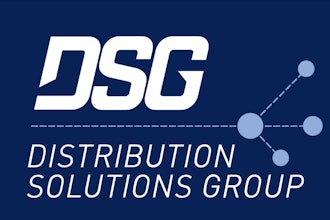
This article originally appeared in the July/August print edition of Industrial Distribution. To view the full digital edition, click here.
It’s one of the most contentious areas we cover each year, and results are in for our annual Salary Report. Read on for the specific factors affecting compensation, including the satisfaction levels of our readers. Distributed via email, the 2015 Industrial Distribution Salary Report survey again funneled respondents into three separate question pools based on where they identified their specific job functions. The following results are based on three separate sets of data from Executives (Owner, Chairman, CEO, CFO, CIO, COO, President, or VP); Mid-Level (non-sales) Management (Product, Operations, Branch, Purchasing); and Sales Representative/Manager. The split came in at 30 percent executives, 29 percent mid-level management, and 41 percent sales rep or sales management.
Free Webinar: The Top Distribution Trends in 2015
EXECUTIVE RESULTS
This year’s executive group once again boasted the highest pay rates, but also the most longevity and experience within their individual career paths. This group, nine out of ten of whom are males, tend to be the oldest bunch. In fact, 44 percent are likely inching towards retirement at 60+ years of age, and only 22 percent are 49 years or below (Figure 1).
In terms of business profile, their distributorships look like this:
- 56 percent oversee companies with $25 million or less in revenue. Only six percent are at companies of $500 million+ annual sales, and the remaining 38 percent land in the mid-sized bracket.
- 34 percent are located in the Midwest, while the second largest group, 22 percent, is in the Northeast.
- 19 percent represent companies in the south, 11 percent in the west, and 14 percent outside of the U.S.
Our executive group this year boasts an average base salary of $179K, which is basically on par with what we’ve seen over the past few years. On average, these executives earned another $100K in additional compensation, including bonuses, 401K contributions, educational reimbursement, and other additional cash.
It’s no surprise that the highest paid group is consistently the most satisfied, year over year, with their overall package. For the C-level group, that satisfaction level has even increased since last year: this year, 87 percent say they feel they are fairly compensated, compared to 84 percent who said the same in 2014 (Figure 2). Additionally, only one in ten said they’d fallen victim to a salary or benefits cut in the past year, a stat that’s improved significantly over 2014, when 25 percent said the same. The year prior, 20 percent had taken a hit. For some respondents, they have their eyes on more long term benefits, especially those with an ownership stake in their businesses. Said one, “The payoff is in the future value of the company.” Said another, “I get a percentage of the profit.” Others are willing to wait, as the business is grown. Said one, “I know the profitability of the company, (and my) compensation is proportionate to it.” Added another respondent: “We are building a regional business. My expectations are for greater financial compensation over the next two years.”
And while 37 percent have not received any sort of increase over 2014, the majority have, in fact, seen a pay or benefits increase in the past year. Specifically:
- 23 percent received a cost of living increase based on inflation.
- 16 percent have been given more incentive-based opportunities for cash rewards.
- 16 percent received a considerable increase based on performance.
- 15 percent received a standard increase based on performance.
- 3 percent were rewarded with a stronger benefits package.
The executive group will likely suggest that they’ve earned these increases, especially since 97 percent said the demands of their jobs have either increased or stayed the same. This group is also the most educated of the three, as 76 percent boast a college degree or higher. There were a few notable changes over previous year’s reports in relationship to job and industry tenure. For example:
- The average number of years our C-level executive survey respondents have worked in the industry is 26, which is a tenure that’s been slowly shrinking over the past few years. In 2012, our respondent group said they’d worked in the industry, on average, for 30 years. In 2013, the average was 28.5 years, down to 27 in 2014.
- They’ve worked for their company an average of 21 years — up from 20 years last year.
- They’ve held their current position for an average of 14 years — up from 12 years, on average, last year.
MID-LEVEL RESULTS
The mid-level management group always tends to be the most diverse, and this year is no different. In fact, it’s even better represented by women in 2015, as the group size has bumped up to 23 percent (from 17 percent who reported the same last year). Additionally:
- 28 percent are under the age of 40;
- 25 percent are between 40 and 49;
- 29 percent are aged 50 to 59; and
- 19 percent are 60+.
Interestingly, most of our mid-level managers hail from large companies — with 44 percent saying they work for a company with $500 million or more in annual sales. In fact, a mere six percent represent the smallest businesses in the industry, with the rest falling in the middle. Another interesting fact about this group: They are universally educated. While there are fewer graduate degrees than what we see with the C-level set, not a single respondent in this category didn’t have at least a little college under their belts. Most (55 percent) have a college degree.
The total package between base salary and additional compensation for the mid-level management group this year came in around $114K – split at $92K base and $22K in bonuses, 401K contributions, educational reimbursement, and other additional cash. This amounts to a small increase from the 2014 package of $109K. The average number of years these respondents have worked for their specific companies is 14; they’ve served in their individual roles for six years.
In terms of job satisfaction, 65 percent of the mid-level management group feels as though they are fairly compensated, leaving a full third who don’t, and 56 percent say they feel they’re faced with adequate job growth opportunities at their current companies. While 35 percent said they felt growth opportunities were not in the cards, 10 percent said they simply weren’t sure about their prospects. Company leaders should take note of this disconnect, considering this year’s ID Survey of Distributor Operations cited “finding more qualified people” as one of the top challenges facing the industry.
In the write-in portion, key reasons cited for this dissatisfaction had to do with employees feeling like they are overlooked, overworked, or both. “I have been given the duties of two other positions, but have not been compensated,” said one respondent. Said another, “I work a lot of extra hours and save the company a great deal of money but because of my age (64) I get passed over.” According to another respondent, “I still feel I have many more responsibilities above my job title.”
This group overwhelmingly feels their job responsibilities have increased, with 79 percent saying they do more than they did last year (Figure 3). Only three percent do less, and 18 percent have determined their job responsibilities have remained the same. In fact, the number of employees this group typically supervises has stayed the same, if not slightly decreased from last year. Specifically:
- 59 percent supervise five or fewer employees (from 53 percent last year).
- 15 percent supervise six to 10 (from 14.5 percent).
- 10 percent supervise 11 to 20 (from 14.5 percent).
- 16 percent supervise more than 20 (from 18 percent).
Twenty percent of survey respondents in this group tell us they’ve faced some type of salary or benefits cuts in the past year. This is actually slightly worse than 2014, when 15 percent said the same. As for those who received an increase, the majority (42 percent) said they’d received a standard increase based on performance. Fourteen percent identified their raise as “considerable.”
SALES/SALES MANAGEMENT RESULTS
The sales and sales management category of industrial distribution industry personnel represents a shocking lack of gender diversity, with 97 percent of our survey respondents being male. Age-wise, we see an aging demographic much like that of the executive level, with 66 percent above 50 years of age (nearly half of whom are 60 and above). Ninety-one percent of our survey respondents in this category have at least some college under their belts. The companies represented within this segment are fairly spread out — with around a quarter each from the Northeast, Midwest, and South, as well as 15 percent from the west coast and a handful from outside the U.S. The company revenue breakdown is as follows:
- 23 percent represent companies generating $25 million or less in annual revenue.
- 20 percent represent companies generating between $25 and $100 million.
- 13 percent represent companies generating between $100 and $500 million.
- 44 percent represent companies generating more than $500 million.
This year’s typical base salary for the sales and sales management professionals was around $75K, which is in line with last year’s results. Just over half of these respondents receive commission of some type, in addition to their base rate and, for those, the amount varied tremendously. Some salespeople are seeing commissions in the six figures, whereas others take home very little in incentive pay. For those who also receive additional compensation, like bonuses, 401K contributions, education reimbursement, or additional cash, the average amount identified was around $13K.
This year’s data shows an interesting shift over last year when it comes to job satisfaction. Last year, 72 percent of respondents said they felt they were fairly compensated, compared to 59 percent the year prior (2013). This year, the group that feels satisfied has dipped back again to 60 percent.
This shift is no surprise when you look at a separate, but related change: 22 percent of respondents this year say they’ve faced salary or benefits cuts in the past year, compared to 12 percent who said the same last year. Of those who have been lucky enough to receive an increase:
- 27 percent received a standard increase based on performance.
- 21 percent received a cost of living increase based on inflation.
- 11 percent received a considerable increase based on performance.
- 9 percent were given more incentive-based opportunities for cash rewards.
- 3 percent were rewarded with a stronger benefits package.
For some in this job segment, the complexities and challenges of the sales role is enough to create some frustration. One respondent lamented the lack of consistency in their commission structure as a reason they felt dissatisfied. “Every year our commission compensation is restructured and every year we need to increase sales at least 10 percent just to maintain the same commission we made the previous year,” explained the reader. “(It’s) impossible to maintain any type of consistent gross pay increase year over year.”
Travel is another area that adds stress to the job for some more than others. While 16 percent are not required to travel at all, 13 percent travel more than 50 percent of the time. More common is road time somewhere between 20 and 50 percent (Figure 4). And much like the other groups, the vast majority of sales and sales management professionals have seen the demands of their jobs increase. In fact, 99 percent say they’ve stayed the same or increased. One respondent described his work-life balance as “out of whack.” But for others, the benefits outweigh the demands. “I like what I do and do what I like,” said one respondent. “I am paid well for what I am doing, even with the travel time.”
This group is also a little less optimistic about their prospects for growth within their existing companies: Just about half say they’re faced with adequate job growth opportunities, compared to 62 percent who said the same last year (Figure 5). Perhaps it’s an issue of feeling undervalued. Some of the write-in responses in this category were from older salespeople who felt they were passed over due to their age and, said one, “they figure I can’t go anywhere.” Said another, “With what I bring to the company – with skill and know-how – it is hard to put a dollar value on that...”























